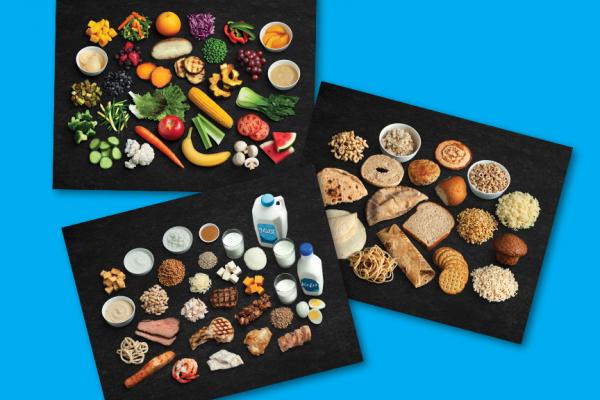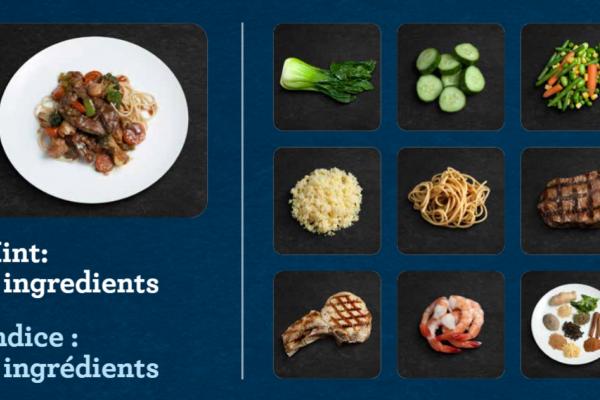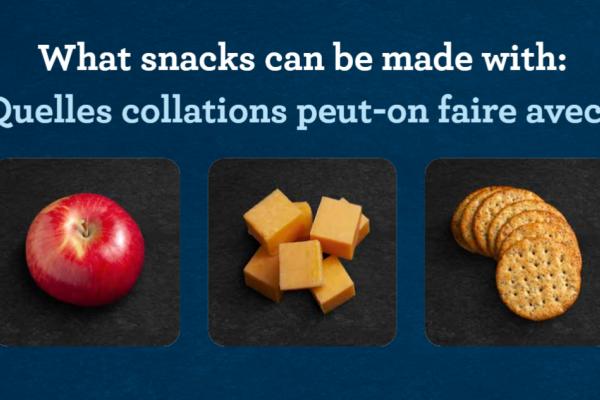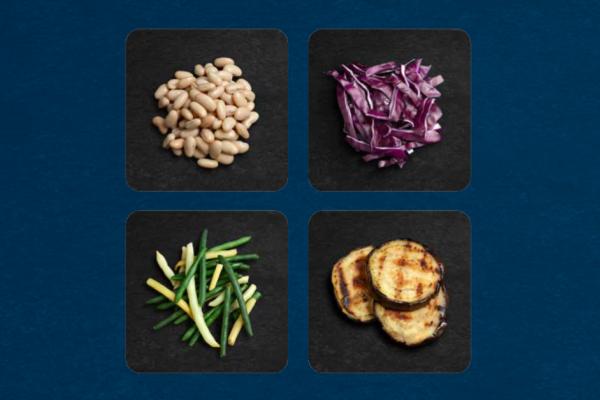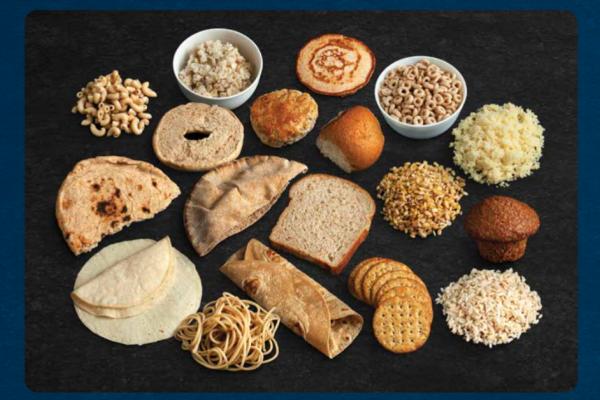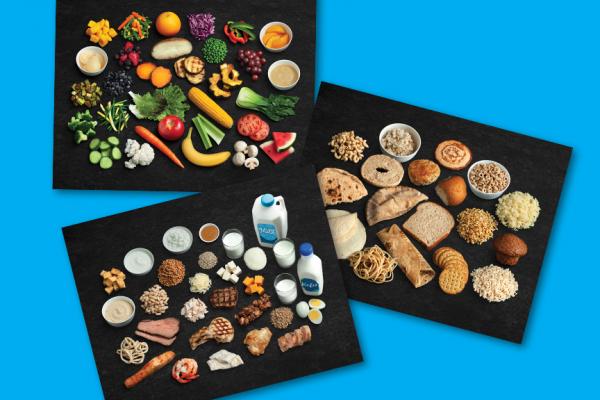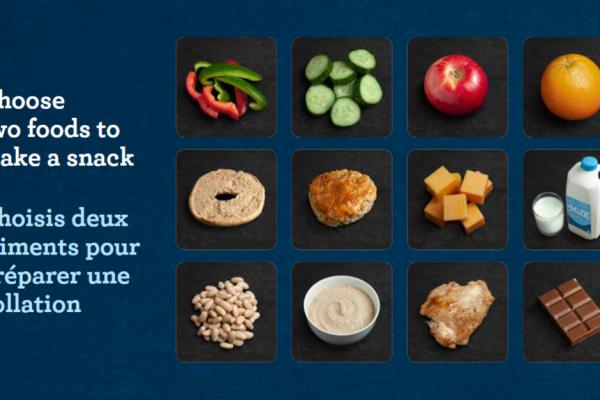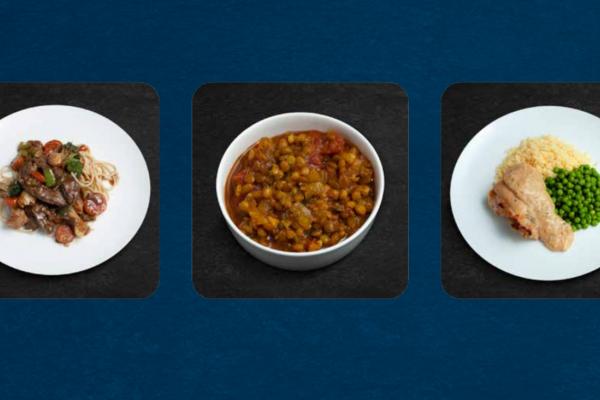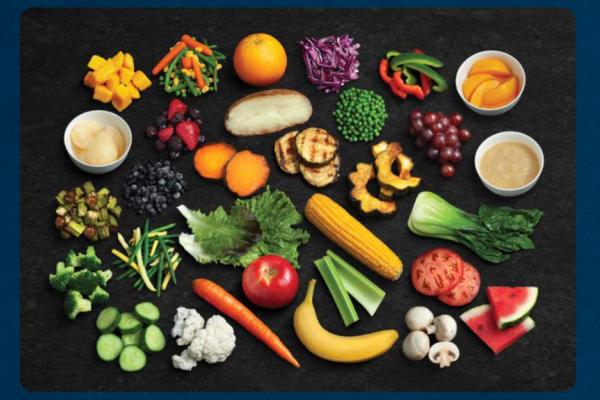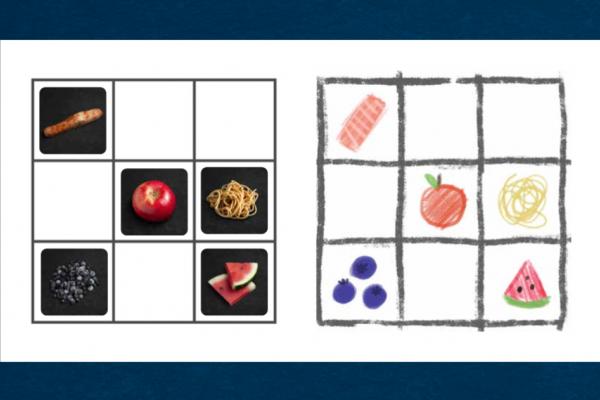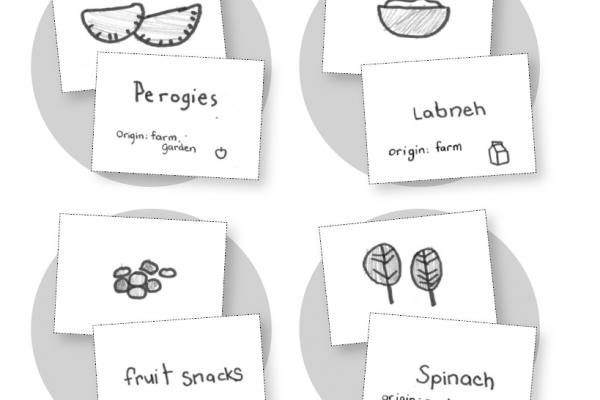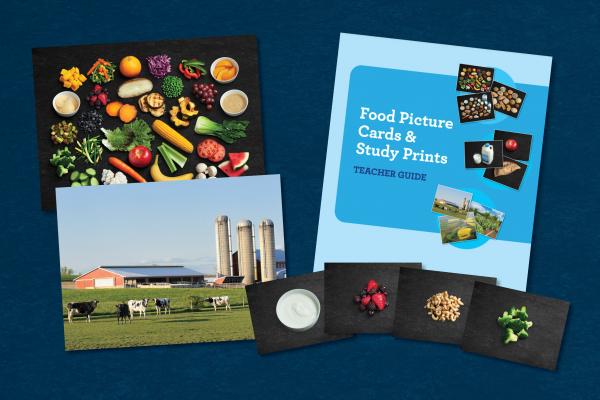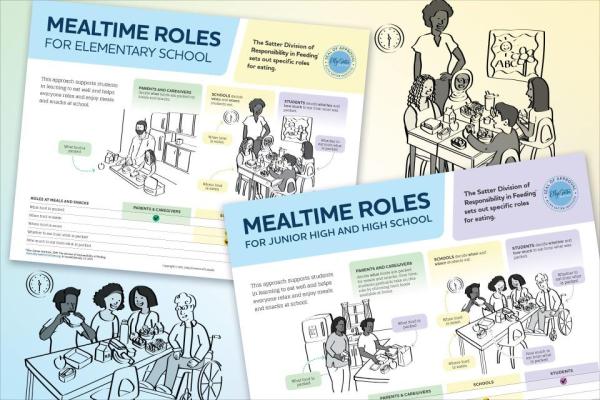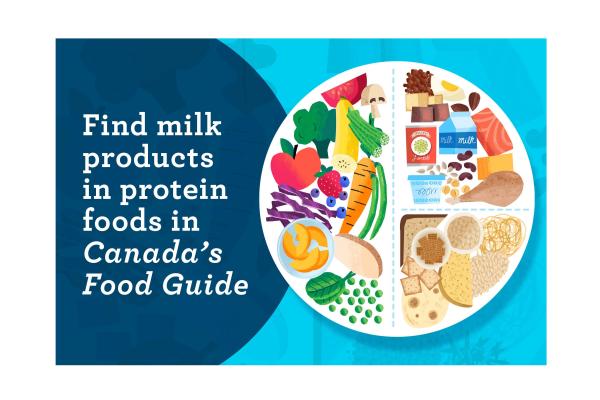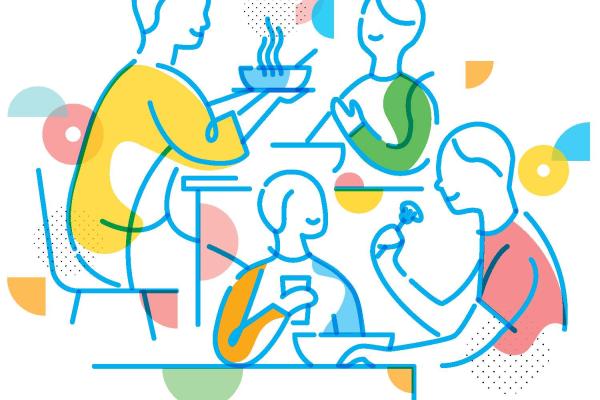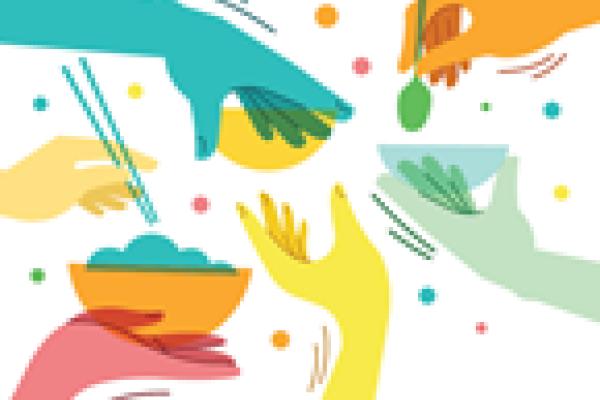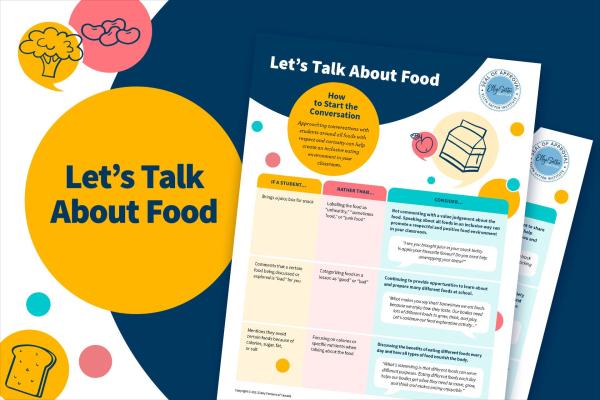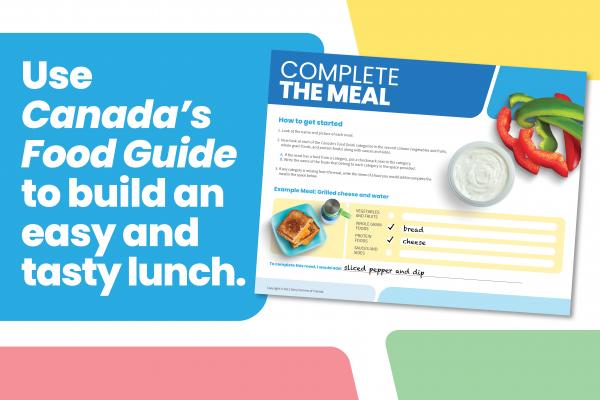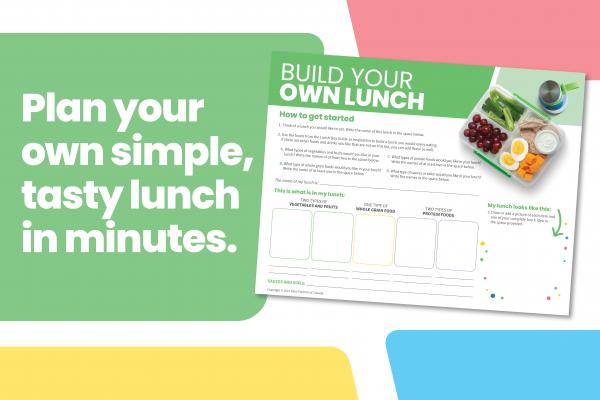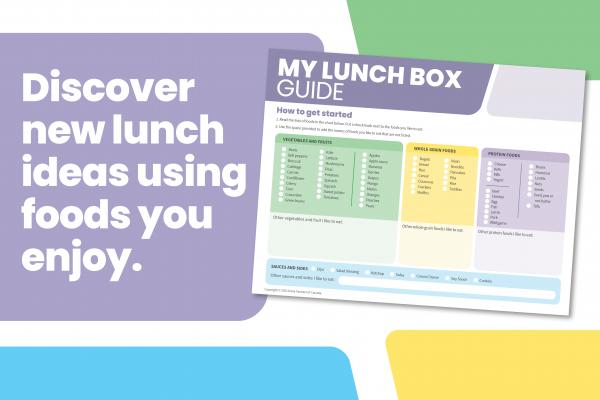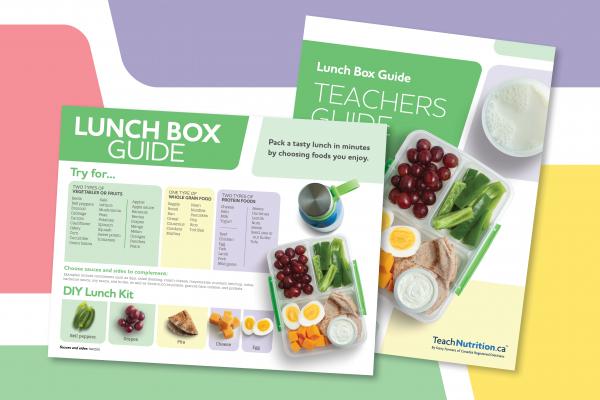Food Origin Digital Activity
This food origin poster activity shows students the many ways food is grown and produced in Canada.
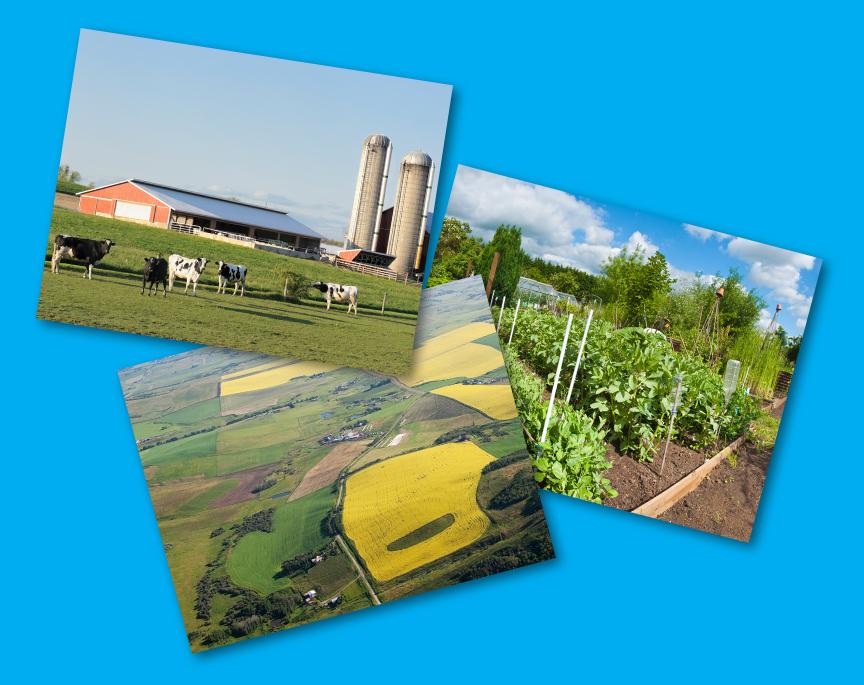
The Study Prints in your resource kit have an image on the front and a brief description with questions on the back. To use the Food Origin Study Prints in an online learning environment, download the slide deck below. Using the slide deck, show students the food origin images and ask the following questions to generate class discussion. Suggested answers are written in italics where relevant. Visit Ag for Life or Alberta Milk for more ideas to extend learning.
Before completing this activity, we recommend that you read the section “How to Talk about Food with Students” in the Teacher Guide.
Supported by Ag for Life.
Farm
Cows, pigs, poultry, sheep, and goats live in barns, pastures, and ranches.
Single Food Cards that match this study print: beef, Cheddar cheese, chicken, cottage cheese, eggs, kefir, lamb, milk, Mozzarella cheese, paneer, pork, skim milk powder, turkey, yogurt.
- What is this image of? A farm; a dairy farm
- Would you expect to see this in Alberta? Yes. Other places in Canada? Yes
- What animals do you see? Cows
- What other animals might live on a farm? Pigs, chickens, turkeys, sheep, goats….
- Have you ever seen or visited a farm? What type of farm was it? Dairy farm, ranch, poultry farm….
- Are barns important in all seasons in Alberta? Yes. Why? Temperature regulation in summer and winter, protection from the elements and predators, comfortable bedding….
- Who works to raise animals on a farm? Farmer, veterinarian, animal nutritionist...
- What kinds of tools and equipment might be needed to take care of animals on the farm? Food, water, bedding, milking system, stalls, feed bins, manure scrapers….
- Match a food card to this study print and explain why you chose it.
Field
Grains, pulses, legumes, oilseeds, spices, and seeds are types of crops grown in fields
Single Food Cards that match this study print: bagel, bannock, barley, bread, bun, cereal, couscous, crackers, hummus, lentils, macaroni, muffin, naan, noodles, oatmeal, pancake, peanut butter, pita, rice, roti, salad dressing, spices, sunflower seeds, tofu, tortilla, beans.
Vegetables may also be grown in fields: bell peppers, bok choy, broccoli, cabbage, carrot, cauliflower, celery, corn, cucumbers, eggplant, green and yellow beans, lettuce, mushrooms, okra, peas, potato, squash, sweet potatoes, tomatoes.
- What is this image of? Fields or crops
- Would you expect to see this in Alberta? Yes. Other places in Canada? Yes
- What do you think is being grown in these fields? Wheat, barley, canola, oats, mustard, pulses (lentils, beans, peas, chickpeas).…
- What types of food could these crops become? Wheat flour, pasta, bread, canola oil, mustard, canned pulses….
- What else might be grown in a field? Flax, corn, potatoes, sugar beets….
- Have you seen or visited fields like this before?
- Who works in fields? Farmers/producers, farm hands, agrologists, agronomists….
- Can crops be grown during all seasons in Alberta? No
- What tools or equipment might be needed to plant, harvest and store crops? Tractors, seeders, sprayers, combines, grain trucks, augers, bins….
- Match a food card to this study print and explain why you chose it.
Garden
Vegetables are grown in gardens or greenhouses. They may also be grown in fields.
Single Food Cards that match this study print: bell peppers, bok choy, broccoli, cabbage, carrot, cauliflower, celery, corn, cucumbers, eggplant, green and yellow beans, lettuce, mixed vegetables, mushrooms, okra, peas, potato, squash, sweet potatoes, tomatoes.
Fruit may also be grown in gardens in Canada: apples, berries, grapes, peaches, pears, watermelon.
- What is this image of? A garden
- Would you expect to see this in Alberta? Yes.Other places in Canada? Yes
- What do you think is being grown in this garden? Cabbage, beans, cucumbers….
- What else might be grown in a garden? Carrots, potatoes, tomatoes, corn, berries….
- Have you ever grown a garden or visited one? What type of garden was it? Family garden, greenhouse, community garden, indoor/hydroponic garden….
- Who grows vegetables? Farmers/producers, gardeners….
- What season is shown? Summer. What do you think happens to this garden in other seasons? Spring – planting; fall – harvesting; winter – resting; greenhouses may be growing year-round
- What tools or equipment might be needed to grow vegetables? Shovels, stakes, watering cans, hoses, fertilizer, seeds….
- Match a food card to this study print and explain why you chose it.
Greenhouse
Vegetables and fruit are grown in greenhouses. They may also be grown in gardens, orchards, or fields.
Single Food Cards that match this study print: bell peppers, bok choy, broccoli, cabbage, carrot, cauliflower, celery, corn, cucumbers, eggplant, green and yellow beans, lettuce, mixed vegetables, mushrooms, okra, peas, potato, squash, sweet potatoes, tomatoes, apple, applesauce, banana, berries, grapes, mango, orange, peaches, pears, saskatoon berries, watermelon.
- What is this image of? A greenhouse
- Would you expect to see this in Alberta? Yes. Other places in Canada? Yes
- What do you think is being grown in this greenhouse? Tomatoes
- Have you ever visited a greenhouse?
- Who works at a greenhouse? Growers, technicians, plant biologists….
- Can foods be grown in a greenhouse during all seasons in Alberta? Yes
- What foods do you think are commonly grown in greenhouses in Alberta? Tomatoes, hot peppers, bell peppers, cucumbers, herbs, and mushrooms.
- What tools or equipment might be needed to grow vegetables? Temperature controls, beneficial insects to eat pests, fans, lighting, water, fertilizer, pollinators, seeds….
- Match a food card to this study print and explain why you chose it.
Nature
Moose, deer, waterfowl, and grouse are examples of wild game that live in nature in Canada.
Single Food Cards that match this study print: berries, duck, moose, saskatoon berries.
- What is this image of? A moose
- Would you expect to see this in Alberta? Yes. Other places in Canada? Yes
- What types of animals that people eat live in nature? Moose, deer, duck, grouse, partridge, rabbit, fish...
- Have you seen animals in nature?
- Do animals live outside during all seasons in Alberta? Yes
- What other foods could you gather from nature? Saskatoon berries, chokecherries, red currants…. Note: Always check with a trusted adult before eating any food found in nature to ensure it is safe.
- Match a food card to this study print and explain why you chose it.
Orchard
Fruit are grown on trees, vines, or bushes. They may also be grown in gardens or greenhouses.
Single Food Cards that match this study print: apple, applesauce, banana, berries, grapes, mango, orange, peaches, pears, saskatoon berries, watermelon.
- What is this image of? An apple orchard
- Would you expect to see this in Alberta? Yes. Other places in Canada? Yes. Note: Orchards in Alberta are often much smaller than in other places in Canada.
- What do you think is growing on these trees? Apples
- What else might be grown on trees or in an orchard? Peaches, pears, plums, apricots, cherries...
- Have you ever seen fruit growing? In a garden, in an orchard, fruit tree in the neighbourhood….
- Who grows fruit? Orchardist, orchard worker, farmer/producer, gardener...
- Can fruit be grown during all seasons in Alberta? No. Where does the fruit we eat in the winter and spring come from? Other countries, canned, frozen, dried….
- What tools or equipment might be needed to grow fruit? Shovels, fences or stakes, ladders, hoses, fertilizer, seeds...
- Match a food card to this study print and explain why you chose it.
Water
Fish and shellfish are farmed and fished.
Single Food Cards that match this study print: salmon, shrimp, squid, tuna, white fish.
- What is this image of? Water; a mussel farm
- Would you expect to see this in Alberta? No. Other places in Canada? Yes
- What foods do we eat that come from the water? Fish – salmon, cod, whitefish, trout, pike….; Shellfish – shrimp, prawns, mussels, clams, crab, lobster….
- Have you ever visited a fishing boat or gone fishing?
- Who works on a fishing boat? Fishers, guides, packers….
- What seasons can you go fishing in Alberta? All seasons
- What kind of tools or equipment might be needed to fish? Fishing rods, fishing lures, nets, fishing licence, boat...
- Match a food card to this study print and explain why you chose it.



